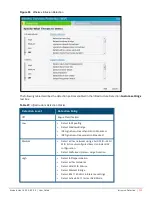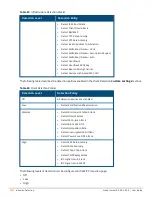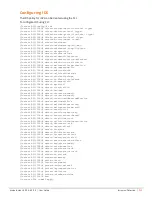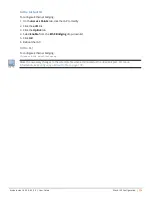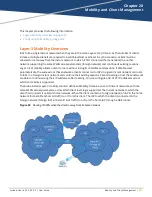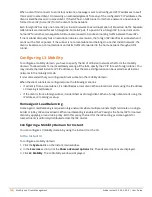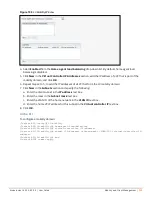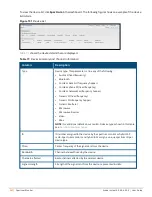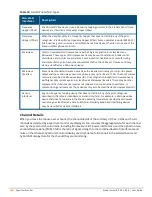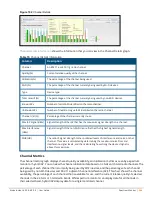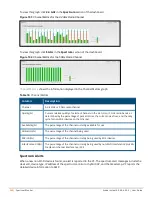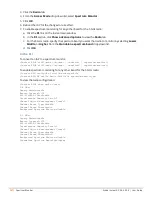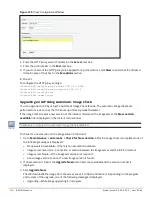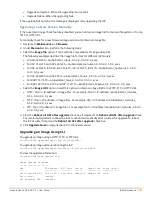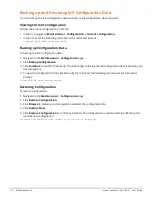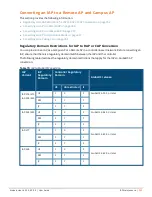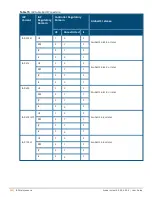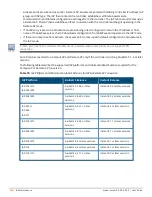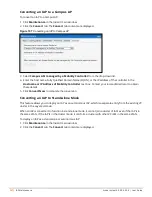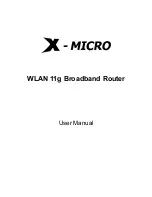
Column
Description
Duty-cycle
Device duty cycle. This value represents the percent of time the device
broadcasts a signal.
Add-time
Time at which the device was first detected.
Update-time
Time at which the device’s status was updated.
Table 71:
Device Summary and Channel Information
Non-Wi-Fi Interferers
The following table describes each type of non-Wi-Fi interferer detected by the Spectrum Monitor feature:
Non Wi-Fi
Interferer
Description
Bluetooth
Any device that uses the Bluetooth protocol to communicate in the 2.4 GHz band is
classified as a
Bluetooth
device. Bluetooth uses a frequency hopping protocol.
Fixed
Frequency
(Audio)
Some audio devices such as wireless speakers and microphones also use fixed frequency
to continuously transmit audio. These devices are classified as
Fixed Frequency (Audio)
.
Fixed
Frequency
(Cordless
Phones)
Some cordless phones use a fixed frequency to transmit data (much like the fixed
frequency video devices). These devices are classified as
Fixed Frequency (Cordless
Phones)
.
Fixed
Frequency
(Video)
Video transmitters that continuously transmit video on a single frequency are classified as
Fixed Frequency (Video)
. These devices typically have close to a 100% duty cycle. These
types of devices may be used for video surveillance, TV or other video distribution, and
similar applications.
Fixed
Frequency
(Other)
All other fixed frequency devices that do not fall into any of the above categories are
classified as
Fixed Frequency (Other)
.
Note that the RF signatures of the fixed frequency audio, video, and cordless phone
devices are very similar and that some of these devices may be occasionally classified as
Fixed Frequency (Other)
.
Frequency
Hopper
(Cordless Base)
Frequency hopping cordless phone base units transmit periodic beacon-like frames at all
times. When the handsets are not transmitting (that is, when there are no active phone
calls), the cordless base is classified as
Frequency Hopper (Cordless Base)
.
Frequency
Hopper
(Cordless
Network)
When there is an active phone call and one or more handsets are part of the phone
conversation, the device is classified as
Frequency Hopper (Cordless Network)
. Cordless
phones may operate in 2.4 GHz or 5 GHz bands. Some phones use both 2.4 GHz and 5
GHz bands (for example, 5 GHz for Base-to-handset and 2.4 GHz for Handset-to-base).
These phones may be classified as unique Frequency Hopper devices on both bands.
Table 72:
Non-Wi-Fi Interferer Types
Aruba Instant 6.5.0.0-4.3.0.0 | User Guide
Spectrum Monitor |
342


